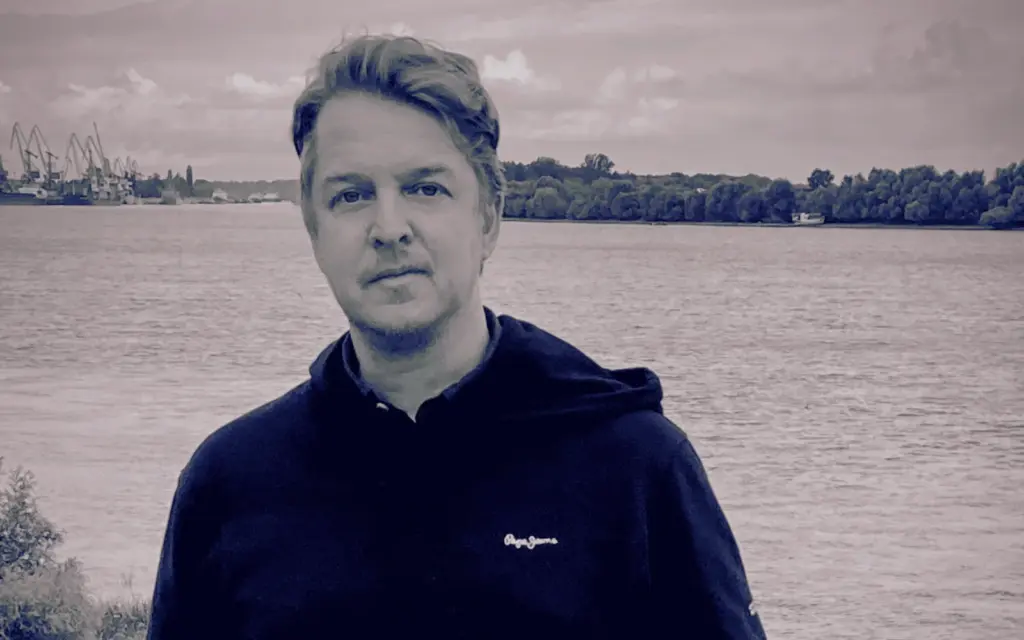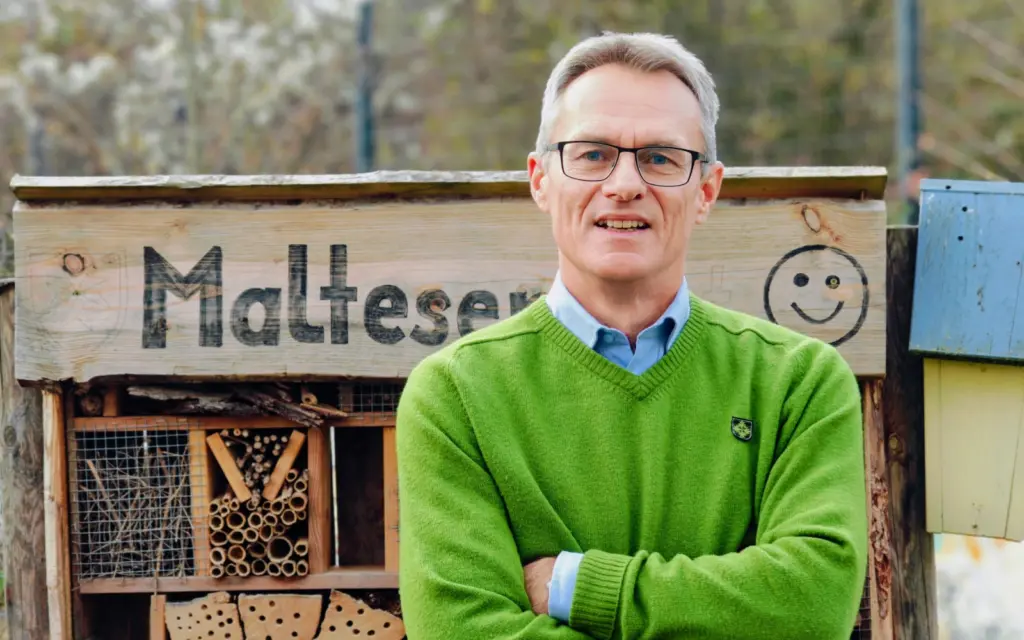Estimated reading time: 8 minutes
Nigeria, a country with deep humanitarian challenges and a vibrant community spirit, became the setting for an approach that aims to transform humanitarian work. In the heart of this experience, I found myself not only facilitating a training but also being trained—learning from the people we engaged with, from my mentor and P-FIM Co-founder Gerry McCarthy, as well as my Nigerian Co-Facilitator Lawrencia Nseobot from RhemaCare, from the power of genuine listening.
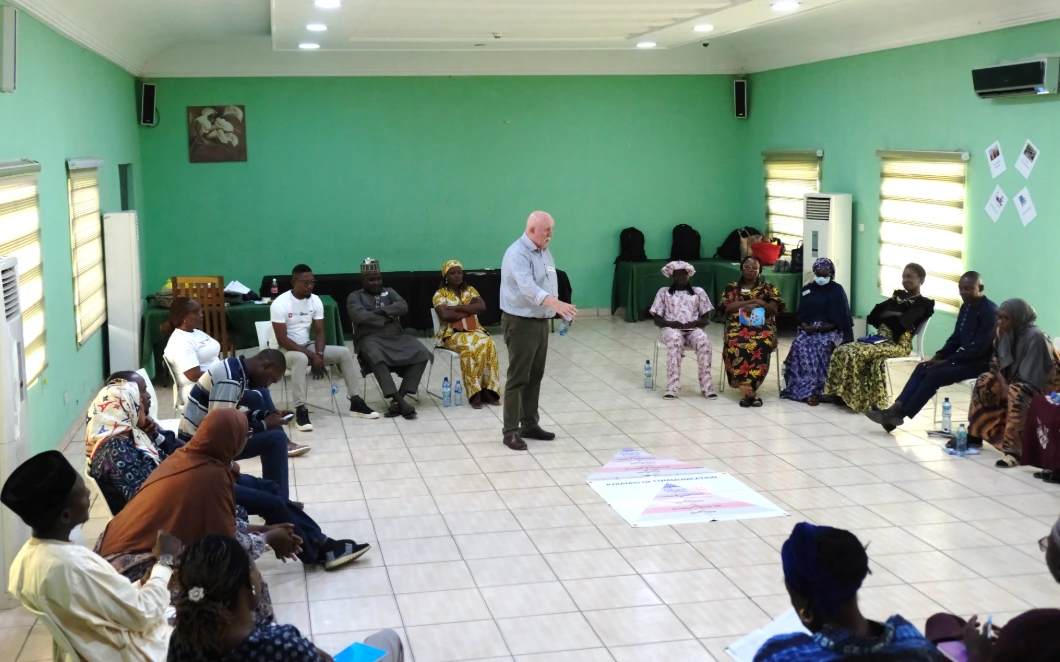
Beyond Questionnaires: Building Trust for Honest Conversations
Too often, humanitarian and development work starts with pre-designed programs based on assumptions rather than real, lived experiences. Standard needs assessments rely on questionnaires and formalized interviews, keeping interactions transactional and hierarchical. But how truthful can a person be—or want to be—if their relationship with the interviewer is built on mistrust or if they see them as a stranger? Will they share everything? Or will they only say what they think will bring them certain goods and services?
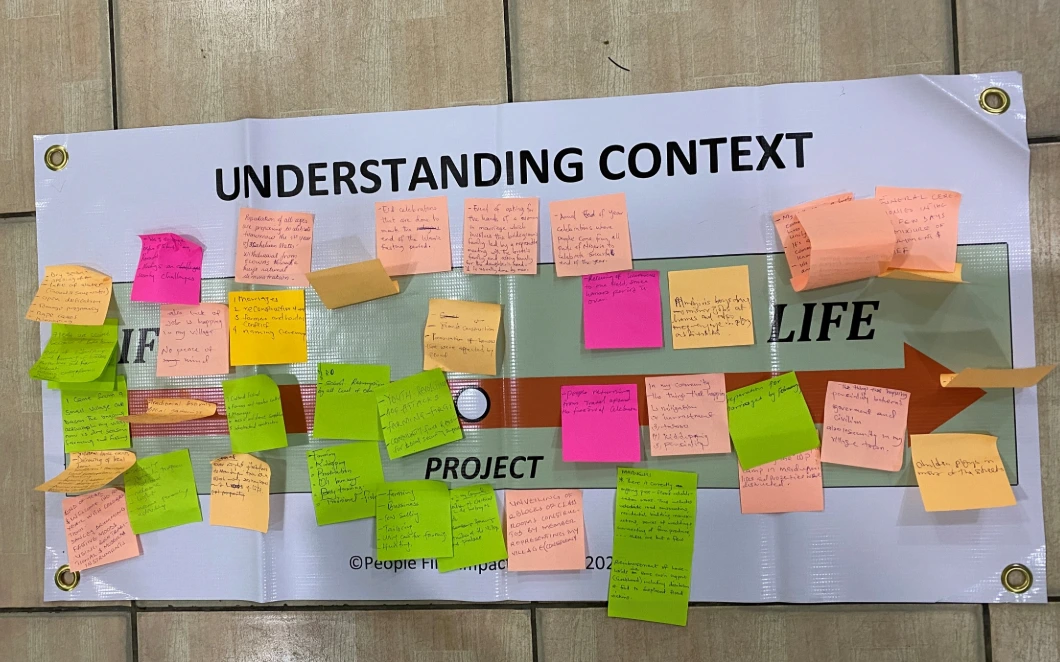
P-FIM changes this dynamic by replacing data collection with human conversations, where trust is the foundation. One of the first steps in this process is shedding visible markers of hierarchy—agency representatives take off their branded vests and visibility shirts to approach communities as equals, fostering open and honest dialogue. By removing organizational labels and engaging communities simply as people speaking with people, we unlock a deeper level of understanding. We hear about conflicts, resource scarcities, resilience strategies, and community-driven solutions—not just needs, but lived realities. This approach ensures that external interventions build on what already exists rather than disrupting local structures.
Recognizing what is common to all people: The Wheel of Life Exercise
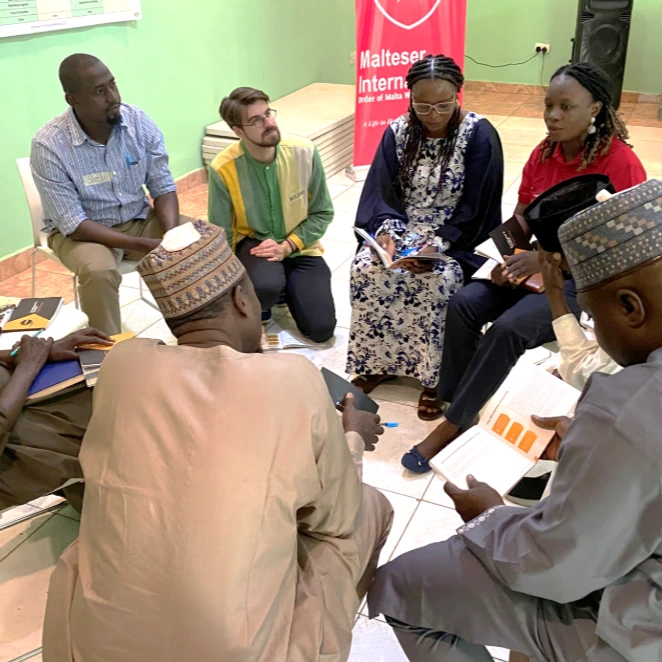
A defining moment in the training came during the Wheel of Life exercise, which reinforced a simple but powerful truth: all people, regardless of background, share the same fundamental human characteristics —to be heard, seen, respected, understood, accepted, to self-actualize and to live and grow in peace.
Humanitarian efforts often reinforce hierarchy, treating people as passive recipients rather than as active partners. P-FIM challenges this. Rather than defining people by their needs and vulnerabilities, it acknowledges their strengths, aspirations, and agency. Once we shift this perspective, co-creating solutions with communities becomes a natural next step.
Interagency Collaboration: Breaking Silos for Greater Impact
Breaking down silos through interagency collaboration is key to P-FIM’s success, which allows for better coordination, increased reach, and the ability to engage with communities in their own languages. More importantly, interagency efforts pave the way for consortial projects, which donors increasingly favor as part of advancing localization strategies.
For communities, seeing multiple agencies work together—rather than in competition—reinforces credibility and trust. It shifts the focus from institutional priorities to collective impact and moves away from silo thinking. By coordinating efforts, organizations avoid duplicating work and ensure their support reaches communities in a cohesive and effective way. When multiple organizations take part in P-FIM discussions, the findings have a greater chance of influencing humanitarian planning on a larger scale.
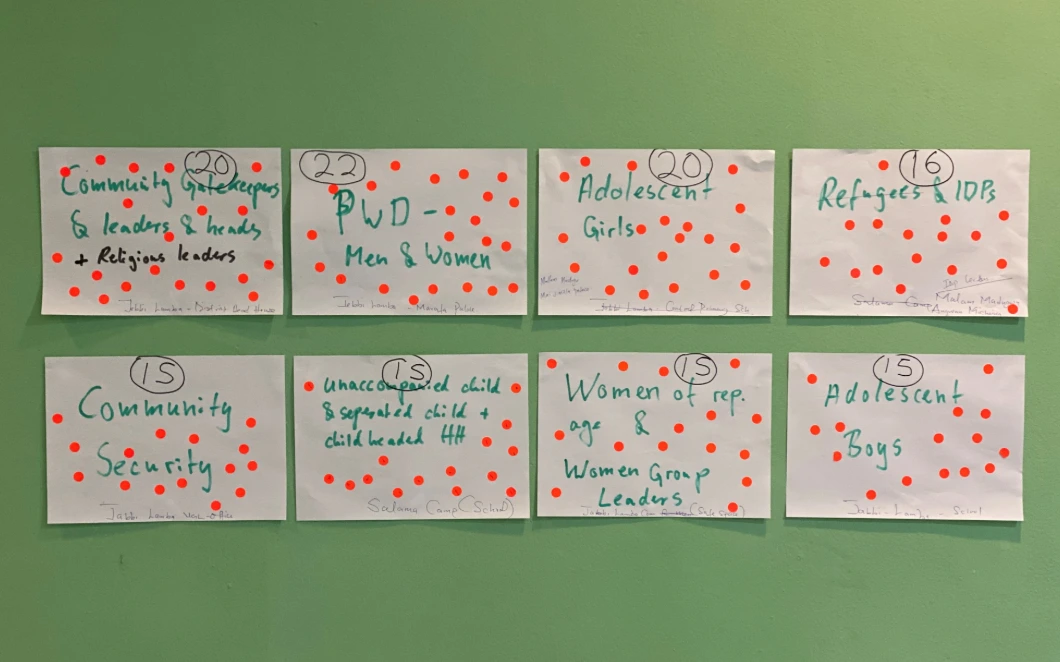
P-FIM as a Foundation for the Entire Program Cycle
“From assessment to exit, P-FIM ensures continuous, trust-based engagement and ownership.”
A major strength of P-FIM is that it provides a strong foundation for the entire humanitarian program cycle—from initial assessment to program design, implementation, evaluation, and sustainable outcome. P-FIM ensures continuous engagement with communities, keeping their voices central at every stage.
By integrating P-FIM from the beginning, programs reflect the real challenges, aspirations and local solutions rather than assumed needs. This leads to more effective implementation and greater sustainability, as communities take ownership of the solutions. Evaluation also becomes more insightful, as trust-based relationships allow for open and honest feedback.
Ensuring Accountability Through Smart, Cost-Effective Community Solutions
A compelling aspect of P-FIM is how practical and resource-efficient the outcomes can be. By truly listening, we uncover local solutions that make sense—often requiring minimal financial investment but offering maximum impact.
A striking example came from a village struggling with seasonal flooding. Their initial coping mechanism—digging trenches—solved one issue but created another: the trenches blocked access to the nearest healthcare facility. Their solution? A simple bridge. Not an expensive infrastructure project, just a straightforward, community-led fix.
This is the essence of P-FIM. By ensuring that solutions emerge from the communities themselves, P-FIM also upholds true accountability—both to the people we work with and to donors. When communities take ownership of projects, funding is allocated toward real challenges and opportunities rather than assumed ones, preventing waste and ensuring that investments result in sustainable, community-driven solutions. Instead of designing projects based on external perspectives, we identify what already works and support communities in strengthening it.
A Mindshift That Extends Beyond Work
“Gerry taught me that facilitation is not about leading—it’s about holding space for others to speak.”
One training participant, initially skeptical, resisted the approach at first, questioning why so much emphasis was placed on listening rather than providing immediate solutions. But as the training progressed, they had a breakthrough: “I thought we were here to fix problems. Now I see that the solutions already exist—we just need to listen.” This shift in perspective captured the essence of P-FIM—true engagement comes not from prescribing answers but from uncovering and amplifying community-driven solutions.
A lasting takeaway from P-FIM is that it applies not only to humanitarian work but also to everyday life. The ability to truly listen, build trust, and foster open dialogue is just as relevant in professional settings as it is in personal relationships. Whether in team discussions, leadership roles, or even family conversations, the principles of P-FIM create stronger connections and deeper understanding.
Throughout the training, I was fortunate to have Gerry as a mentor, from whom I learned that facilitation is not about leading conversations but about holding space for them. His ability to use silence, strategic pauses, and thoughtful engagement was a lesson in itself. By applying these techniques, I not only became a better facilitator but also a more intentional communicator in everyday interactions.

Sustaining P-FIM: The Trainer of Trainers Program
A significant result of our training in Nigeria was the launch of a Trainer of Trainers program. This ensures that P-FIM doesn’t stop at a single workshop but continues to be embedded within local organizations and partner networks in Nigeria.
Beyond Nigeria, Malteser International is exploring P-FIM’s application in new contexts—such as Ukraine, where emergency response efforts often prioritize speed over community involvement. But even in emergency settings, listening is possible and remains crucial. People’s realities should shape interventions, even when the timeline is short.
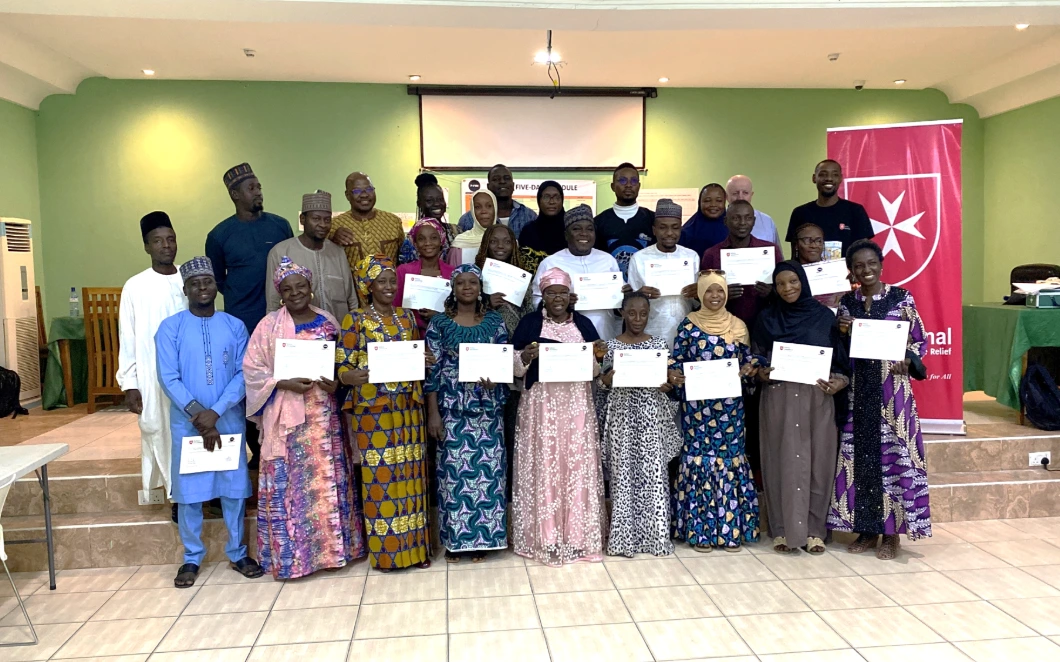
A Call to Action for Donors and Proposal Writers: Experience P-FIM
The future of humanitarian assistance is not about who delivers the most services—it’s about who listens best. As global funding cuts and shifts toward localization reshape the humanitarian landscape, the need for community-driven solutions has never been more urgent. The communities we work with are the architects of their own solutions. Our role is to create the conditions that allow them to succeed by ensuring that projects are not just well-funded but well-founded in the realities and priorities of the people they serve.
For donors, humanitarian agencies, and proposal writers, this is an invitation: invest in approaches that prioritize trust, listening, and true local ownership. Support methods that strengthen existing community structures rather than imposing external ones. The most impactful interventions are not those designed in boardrooms but those shaped by the very people they serve.
I encourage organizations and donors to step into the world of P-FIM—whether by attending trainings, integrating it into their work, or exploring how this approach can reshape their engagement with communities. Seeing P-FIM in action is the best way to understand its impact. It is an opportunity to experience firsthand how deep listening and trust-building can transform humanitarian work in ways that no checklist or pre-designed intervention ever could.
“The most powerful tool in humanitarian assistance isn’t a product—it’s trust.”

